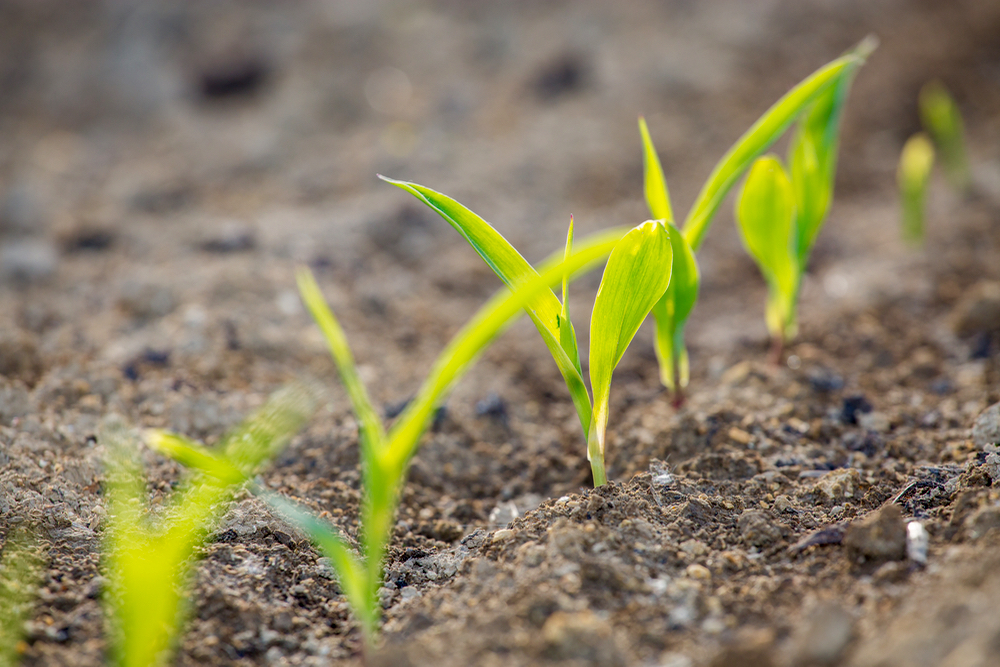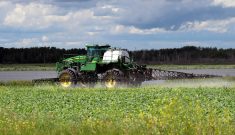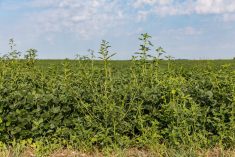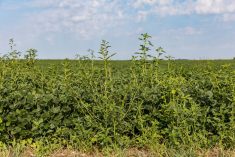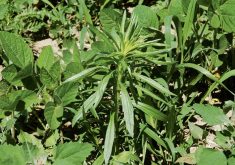Do you get anxious about weeds in the field? Your crops sure do, and according to new research, yield reductions from early-season weed pressure can happen extremely quickly.
Research in the late 1980s established the significant yield impacts caused by weeds if they are not properly controlled early in the growing season, says Clarence Swanton, weed scientist in the department of plant agriculture at the University of Guelph. More recent work is investigating what mechanisms cause this drop, which can amount to several bushels per day.
Why it matters: New research showing how plants communicate and respond to early-season weeds illustrates that good weed control is even more imperative to yield than previously thought.
Read Also

Senft to step down as CEO of Seeds Canada
Barry Senft, the founding CEO of the five-year-old Seeds Canada organization is stepping down as of January 2026.
Swanton says we now know crops like corn and soybeans are able to detect and communicate the presence of weeds even before seedlings emerge from the soil. That detection cues stress-induced adaptive responses, which have a “rapid and irreversible” negative effect on yield, further reinforcing the importance of early season weed control.
“This is actually the science behind why we suggest what we do. It’s going to (have an) impact on weed control, on yield potential, cover crop use, all these things you can think about,” he says.
“The number one driver of yield potential is the time of weed emergence relative to the crop.”
How it works:
- Corn and soybeans register light reflected from the far-red end of the spectrum by weeds. This initiates stress responses in the crop.
- Crop seedlings can even perform this detection and responsive action before emerging from the ground, permanently altering their own morphology in ways not conducive to higher yield.
- The younger the plant, the more susceptible it is.
According to Swanton, crops can detect the presence of external stressors through several mechanisms, including the release of volatile compounds used as a warning to others of the species in the event of an insect attack, for example, as well as communication through root systems and changes in light quality.
But when it comes to registering weedy threats, light communication is very important.
“Plants don’t compete initially for light, water and nutrients. That’s the most significant thing. It changes everything and how we view competition,” says Swanton.
“You have to be pretty close to the surface to be able to detect above the surface, and at the same time you have to fire the genes and change your morphology,” says Swanton. “It did all that in the last few centimetres of the soil. It’s remarkable that it can do that.”
Once altered at an early stage, further development can only occur within the now-altered growth parameters. In other words, what has been done cannot be undone.
The stress processes that actually hurt yield, says Swanton, have to do with the overproduction of natural compounds.
As corn and soybean plants are stressed, they produce higher levels of hydrogen peroxide (H2O2) and singlet oxygen (1O2), which in normal amounts have no ill effect. Like alcohol in a person, however, too much can cause damage. Energy then needs to be spent to fix that damage, with antioxidants or carotenoids, pigments within the leaves, acting as sponges to try and absorb excess and prevent cell damage.
Just like people eating antioxidant-rich foods like blueberries, Swanton says plants go through the same stress responses.
“If your child is not growing at a standard growth rate, how serious is it? It’s the same principle.”
Swanton provides an example:
If 100 per cent of corn plants are growing at an average rate of 4.5 grams per day, the yield would be 12,300 kilograms per hectare. If 20 per cent of that overall amount grows at 3.5 grams per day, the entire weight drops to 10,000 kg per hectare. That means a reduction in growth rate of one gram, among a mere 20 per cent of all corn plants, results in yield losses of 2,300 kg per hectare — equivalent to 37 bushels per acre.
“This would help explain why the yield monitor in your combine bounces all over the place, even with top-performing corn hybrids,” Swanton says. “It’s illustrating how yield really hinges on such a delicate balance.”
Impacts for planting green, corn spacing
The key to triggering these yield-depressing mechanisms really is the presence of green matter.
For this reason, Swanton says corn residue, while it would be considered a weed by soybeans, does not appear to affect growth in the same way. Green cover crops, however, definitely would, and he reiterates the importance of appropriately timed burn-down regimens for those planting green.
Corn itself can also have adverse reactions to other corn plants if spacing between each plant is not adequate. The exact proximity threshold is not yet known.
“A soybean knows whether a soybean is growing next to it, or if it’s a weed. Corn doesn’t seem to be able to do that,” says Swanton.
These growth responses to stress, says Swanton, are not limited to corn and soybeans. Indeed, it’s a principle applying to all natural and cultivated environments.
With these crop-specific findings being seen in the lab as well as the field, Swanton said he hopes they will help in the development of more competitive crops.
In the meantime, farmers should still be knocking weeds down as early as possible.
“This is proof of why we stress weed control. It’s very important in terms of weed management. Get to it on your first opportunity,” he says.



